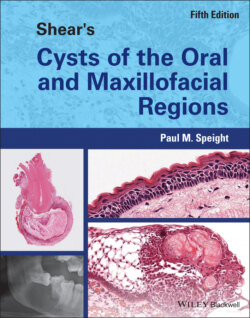Читать книгу Shear's Cysts of the Oral and Maxillofacial Regions - Paul M. Speight - Страница 30
An Approach to Diagnosis of Cysts of the Jaws
ОглавлениеAn accurate diagnosis of a cyst requires knowledge, common sense, and a logical approach to the assimilation of all the information available about each lesion. With few exceptions, it is not possible to reach a correct diagnosis without considering the clinical, radiological, and histological features. This is especially relevant to histopathologists, who may be called upon to make a diagnosis on a small biopsy. To do so without considering the clinical and radiological features often leads to diagnostic errors and incorrect management (Barrett et al. 2017 ). In each chapter of this book we present all the features of each cyst type in context and discuss the differential diagnoses and potential errors that might occur if only small biopsies are examined. Throughout we advise on the importance of correlating clinical, radiological, and histological features and suggest that a diagnosis of an intraosseous lesion should never be made without considering the radiology. We also recommend that a diagnosis should never be made on a small biopsy if there is any uncertainty – when in doubt, the pathologist should request a further biopsy. In this chapter, we briefly discuss an approach to making a correct diagnosis and summarise the key features that can assist in making a diagnosis of cysts of the maxillofacial regions (Tables 2.2–2.4). With regard to the odontogenic cysts, an accurate diagnosis is facilitated by an understanding of tooth development and the pathogenesis of each cyst type (see ‘Pathogenesis of Cysts’ and Table 2.1)
In most cases, the clinical features of cysts are not specific, since the most common presenting feature is a swelling with few other symptoms. The surgeon therefore must rely on additional features to assist in making a provisional diagnosis. For example, a swelling associated with an absent tooth may suggest a dentigerous cyst, and a small, bluish‐coloured swelling on the lower lip of a child is almost certainly a mucocele. Ultimately, however, a final diagnosis is usually made on histological examination, but before this both the clinician and the pathologist should examine the radiographs or imaging.
